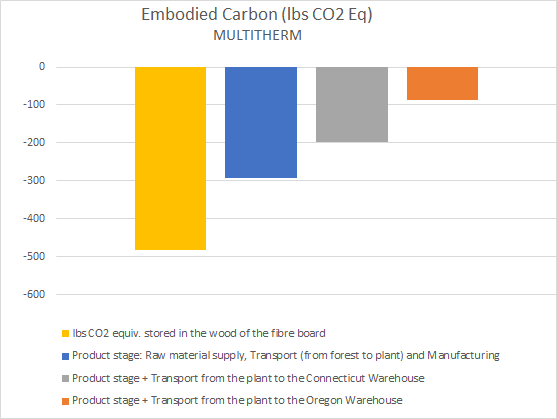If you have a big event coming up, and you want to lose some weight before the event, would you first gain a bunch of weight before you dropped it? Didn’t think so.
Our big event is 2050 – a date toward which all carbon reduction goals are aimed. And while we insulate for many reasons – thermal and acoustic comfort, and energy and monetary savings – a growing focus is being put on lowering greenhouse gas emissions to help fight climate change.
While suboptimal, we can survive in discomfort. But climate change is fast becoming an existential threat. We must act now to reach our carbon reduction goals. We can’t afford to start by throwing on counterproductive pounds of up-front emissions, also called embodied carbon.
You have choices going forward. You can choose board insulations that initially add to the problem such as XPS, EPS, and mineral wool, or you can choose a board insulation that moves you to your goal on day one, such as Sheep Wool, Dense Pack Cellulose, Cork, Hempcrete, Straw Bale or Multitherm Wood Fiberboard made by Gutex.

(based on m2 of board material with R29 equivalent thermal resistance)
How does Gutex do it?
Gutex insulation is made from wood, and as such, for every ton of carbon it contains, 3.67 tons of CO2 were removed from the atmosphere through photosynthesis. By using this wood in our buildings, we effectively extend those carbon savings for the lifetime of the building. The benefits of sequestration depend on good forestry practices that support greater biodiversity and ecosystem health. By using our forests as a building material resource we can increase the rate of forest CO2 absorption in a regenerative process and create a virtuous cycle of negative carbon emissions.
Gutex then optimizes the product’s processing. First, the wood is sourced from the chips and shavings from nearby sawmills, using sustainable forestry practices in the Black Forest. Then the wood is processed into wood fiber insulation using the dry process. This is done at the Gutex factory which is powered by natural gas and 100% renewable electricity energy supply. Yes, it’s true the insulation must travel a distance from factory to job site – but the bulk of that is on relatively low-carbon container ships. The embodied carbon attributed to transportation is low enough that we can be assured that the insulation will arrive at North American job sites, even on the west coast, carbon negative.

(value for a cubic meter of MULTITHERM)
Wood fiber insulation is a fundamental element in making a Smart Enclosure. Find out more about Gutex wood fiber insulations and the Smart Enclosure logic, principles, tiers and assemblies – and how you can make intentional choices for maximum climate impact.
Passive House projects and Zero Net Energy
By 2020, all new residential constructions in California will have to be Zero Net Energy, meaning they will have to produce as much energy as they consume.
One way to reach Zero Net Energy is by applying the Passive House Standards. More information about it with our article explaining the 5 principles: climate specific insulation levels, thermal bridge free connections, high performance windows & shades, airtightness and continuous ventilation.
No matter what form and shape you want to give to your project, whether it is residential or commercial, always think about reducing your carbon footprint before and after the building is finished.
If you have any doubts, contact us and we will help you find a trusted professional for your embodied carbon insulation needs.
